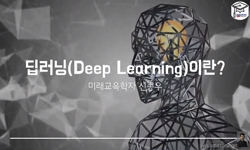Harmful algal blooms (HABs) have been frequently occurred with releasing toxic substances, which typically lead to water quality degradation and health problems for humans and aquatic animals. Hence, accurate quantitative analysis and prediction of HA...
http://chineseinput.net/에서 pinyin(병음)방식으로 중국어를 변환할 수 있습니다.
변환된 중국어를 복사하여 사용하시면 됩니다.
- 中文 을 입력하시려면 zhongwen을 입력하시고 space를누르시면됩니다.
- 北京 을 입력하시려면 beijing을 입력하시고 space를 누르시면 됩니다.



Inland harmful algal blooms (HABs) modeling using internet of things (IoT) system and deep learning
한글로보기https://www.riss.kr/link?id=A108179290
-
저자
Do Hyuck Kwon ; Seok Min Hong ; Ather Abbas (School of Urban and Environmental Engineering, Ulsan National Institute of Science and Technology, Ulsan, 44919, Republic of Korea) ; JongCheol Pyo ; Hyung-Kun Lee ; Sang-Soo Baek ; Kyung Hwa Cho
- 발행기관
- 학술지명
- 권호사항
-
발행연도
2023
-
작성언어
English
- 주제어
-
KDC
539
-
등재정보
SCOPUS,KCI등재,SCIE
-
자료형태
학술저널
-
수록면
109-122(14쪽)
- DOI식별코드
- 제공처
-
0
상세조회 -
0
다운로드
부가정보
다국어 초록 (Multilingual Abstract)
Harmful algal blooms (HABs) have been frequently occurred with releasing toxic substances, which typically lead to water quality degradation and health problems for humans and aquatic animals. Hence, accurate quantitative analysis and prediction of HABs should be implemented to detect, monitor, and manage severe algal blooms. However, the traditional monitoring required sufficient expense and labor while numerical models were restricted in terms of their ability to simulate the algae dynamic. To address the challenging issue, this study evaluates the applicability of deep learning to simulate chlorophyll-a (Chl-a) and phycocyanin (PC) with the internet of things (IoT) system. Our research adopted LSTM models for simulating Chl-a and PC. Among LSTM models, the attention LSTM model achieved superior performance by showing 0.84 and 2.35 (μg/L) of the correlation coefficient and root mean square error. Among preprocessing methods, the z-score method was selected as the optimal method to improve model performance. The attention mechanism highlighted the input data from July to October, indicating that this period was the most influential period to model output. Therefore, this study demonstrated that deep learning with IoT system has the potential to detect and quantify cyanobacteria, which can improve the eutrophication management schemes for freshwater reservoirs.
목차 (Table of Contents)
- ABSTRACT
- 1. Introduction
- 2. Materials and Methods
- 3. Result and Discussion
- 4. Conclusions
- ABSTRACT
- 1. Introduction
- 2. Materials and Methods
- 3. Result and Discussion
- 4. Conclusions
- References
동일학술지(권/호) 다른 논문
-
- 대한환경공학회
- Astha Singh
- 2023
- SCOPUS,KCI등재,SCIE
-
- 대한환경공학회
- Fan Gao
- 2023
- SCOPUS,KCI등재,SCIE
-
Effect of surface charge density on electret filters charge degradation by organic solvent exposure
- 대한환경공학회
- Woo Jin Lee
- 2023
- SCOPUS,KCI등재,SCIE
-
Emergy-based comparative analysis of an ecological economy in the Yangtze River Delta
- 대한환경공학회
- Cui Wang
- 2023
- SCOPUS,KCI등재,SCIE




 DBpia
DBpia






